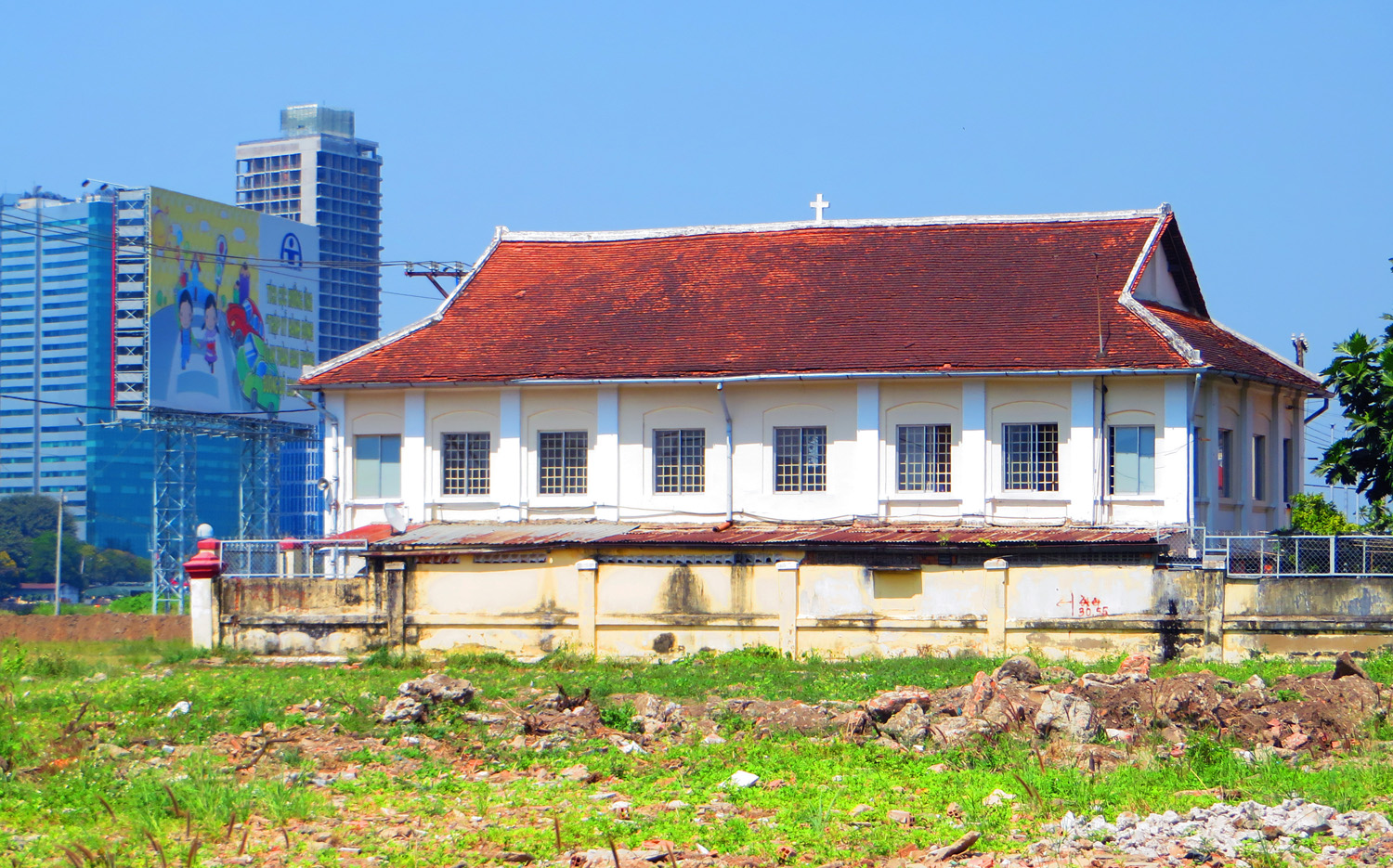
The 1875 rectory of Thủ Thiêm Parish Church is an unusually late example of the so-called “early vernacular” style of French colonial architecture
This article was published previously in Saigoneer.
Two of Saigon’s oldest Roman Catholic institutions, located across the river in Thủ Thiêm, may soon be gone.
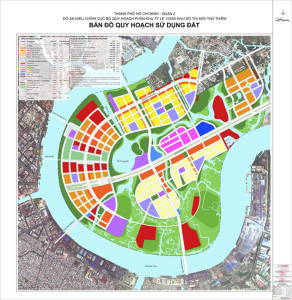
The Thũ Thiêm New Urban Zone project
It’s been reported that in recent years over 14,000 households have been relocated and scores of old buildings demolished in preparation for the ambitious Thũ Thiêm New Urban Zone project.
Among the few noteworthy historic sites which remain are two of the city’s oldest religious institutions, the Thủ Thiêm Parish Church and the Lovers of the Holy Cross Convent. However, the future of both establishments is currently in the balance.
Originally named Thổ Thêm (literally “additional earth”), because its land mass was constantly built up by silt from the Saigon river, Thủ Thiêm was known right down to the 19th century as an area of dense jungle inhabited by many wild animals. As a result, its earliest settlement was concentrated along the banks of the Saigon river, opposite modern District 1.

A sampan on a creek leading off the Saigon river
According to late 19th century scholar Pétrus Ký, this part of Thủ Thiêm was initially home to the Xóm Tàu Ô or “Hamlet of the Black Junks,” which during the reign of King Gia Long (1801-1820) was “assigned as the home of Chinese pirates, whose small sea junks were painted black.”… “When they offered their services to Gia Long, the king received them, and installed them with him under the name of Tuần hải Đô dinh, placing them under the command of their chief, General Xiền (Tướng Quân Xiền). They were commissioned to go and supervise the coast. Those who remained were employed in caulking [sealing the undersides of] boats in the fleet of the king.” (Pétrus Ký, Souvenirs historiques sur Saïgon et ses environs, 1885)

MEP missionary Pierre Lambert de la Motte (1624-1679), founder of the Congregation of the Lovers of the Holy Cross
In the mid 1830s, the arrival of nuns from Việt Nam’s oldest female Roman Catholic order, the Congregation of the Lovers of the Holy Cross (Congrégation des Amantes de la Croix de Jésus-Christ or Hội Dòng Mến Thánh Giá), began to transform the Hamlet of the Black Junks into a Roman Catholic enclave. Originally founded in the north in 1670 by MEP missionary Pierre Lambert de la Motte (1624-1679), the Congregation established its first southern branches in the late 1820s in Biên Hòa and Lái Thiêu.
However, the persecution of Roman Catholics which followed the suppression of the Lê Văn Khôi Uprising (1832-1835) obliged the nuns to flee to Thủ Thiêm, where they built a makeshift wooden residence next to a large tamarind tree. Today that tree still stands in the convent grounds.
The Thủ Thiêm Congregation of the Lovers of the Holy Cross was formally established in 1840 by Jean-Louis Tabert, Vicar Apostolic of Cochinchina. At that time, it comprised 24 “Annamite sisters” – 10 nuns, five novices and nine postulants under the direction of Mother Superior Maria Phước.
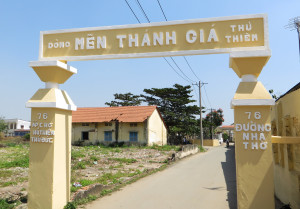
The main gate of the Congregation of the Lovers of the Holy Cross, Thủ Thiêm
Immediately after the arrival of the French in 1859, Father Gabriel Nguyễn Khắc Thành was charged with the construction of the first Thủ Thiêm Church, right next door to the convent.
Thereafter, many Roman Catholics came to settle in the area. In 1869, Charles Lemire described the village of Thu-Thiem, later known as An-Loi-Xa, as being “formed entirely of Catholic Annamites.” (Cochinchine française et royaume de Cambodge, 1869)
From the outset, church and convent worked closely together to propagate Catholicism and contribute to the development of Saigon’s schools, hospitals and clinics.
In addition to assisting with the work of the diocese, nuns from Thủ Thiêm are known to have worked as nurses in the Military (later Grall) Hospital, the Thị Nghè clinic and Chợ Quán Hospital of the Sisters of Saint-Paul de Chartres, and later the Polyclinique Dejean de la Bâtie (modern Saigon Hospital).
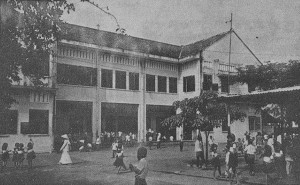
Saint Anna School, Thủ Thiêm in the 1960s
Many of the nuns also trained to work as primary teachers, and in 1874-1875, Father Louis Philippe Montmayeur (Father Minh) of Thủ Thiêm Church oversaw the construction of two (boys’ and girls’) primary schools, which were entrusted to the management of the Congregation of the Lovers of the Holy Cross. In 1955, the RVN Ministry of Education approved the establishment by the Congregation of the Saint Anna School (Trường Thánh Anna), which by the early 1960s offered both primary and secondary training. In 1962, Phan Phát Huồn (Việt Nam Giáo Sử, Cứu Thế Tùng Thư) commented that, since their arrival in Saigon, the nuns of the Thủ Thiêm Congregation of the Lovers of the Holy Cross had taught over 8,500 children.
The Congregation of the Lovers of the Holy Cross grew from just 23 nuns in 1840 to 170 by 1933 and 340 by 1960.
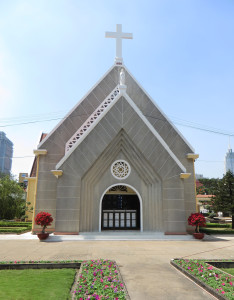
The chapel of the Congregation of the Lovers of the Holy Cross, Thủ Thiêm, built in 1957
After 1975, the Congregation’s schools became state schools and the order diminished in size, but in recent decades it has continued to offer a range of community services, including programmes for the elderly, a children’s nursery and an acupuncture clinic.
Over the years, both church and convent buildings have been reconstructed many times, and most of those standing today date from no earlier than the 1950s.
However, one particular structure – the rectory of the Thủ Thiêm Parish Church, dating from 1875 – is a building of significant heritage value, representing as it does an unusually late example of the early “vernacular” style of French colonial architecture.
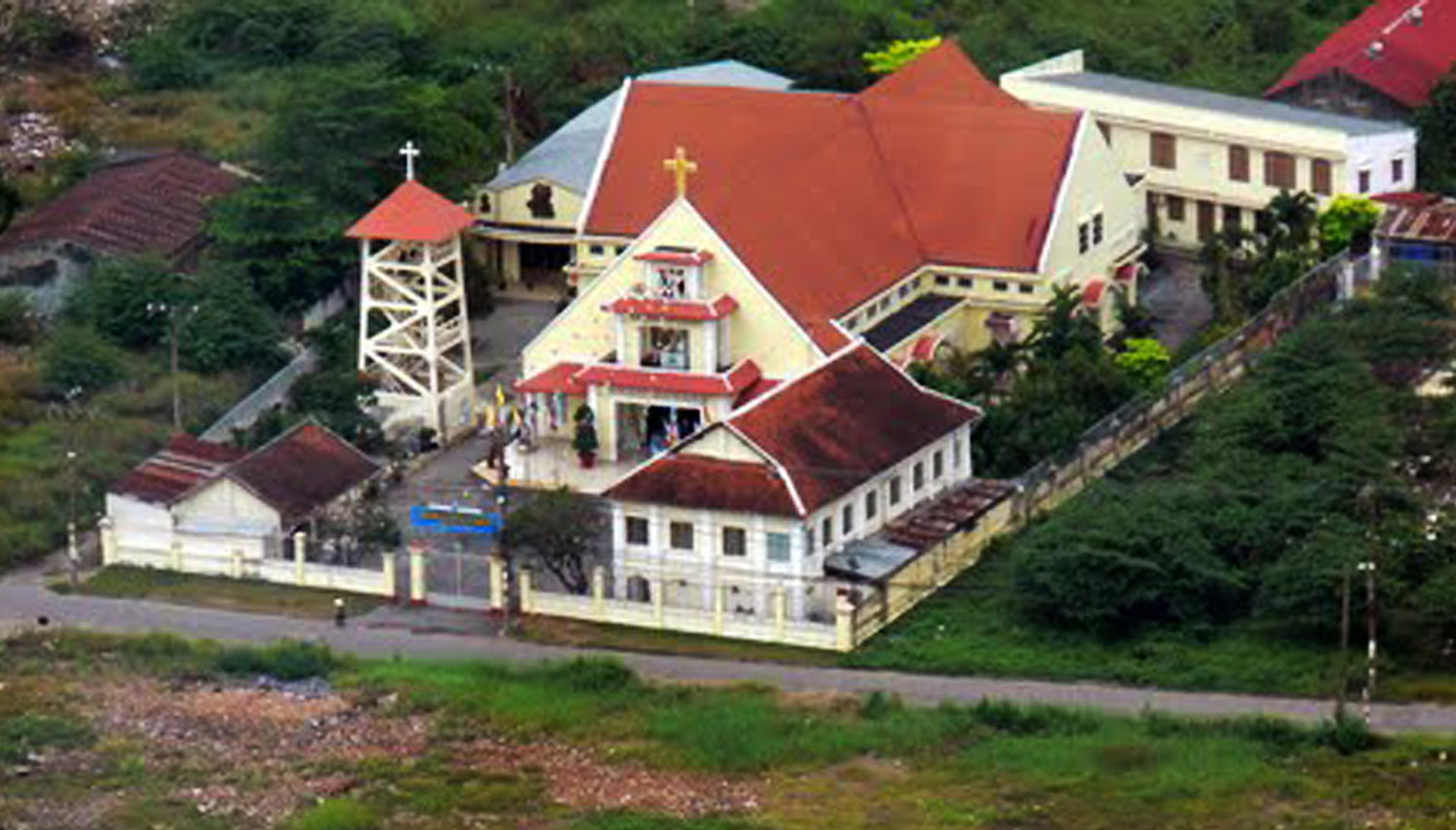
An aerial shot of Thủ Thiêm Parish Church (www.panoramio.com)
Tim Doling is the author of the guidebook Exploring Saigon-Chợ Lớn – Vanishing heritage of Hồ Chí Minh City (Nhà Xuất Bản Thế Giới, Hà Nội, 2019)
A full index of all Tim’s blog articles since November 2013 is now available here.
Join the Facebook group pages Saigon-Chợ Lớn Then & Now to see historic photographs juxtaposed with new ones taken in the same locations, and Đài Quan sát Di sản Sài Gòn – Saigon Heritage Observatory for up-to-date information on conservation issues in Saigon and Chợ Lớn.

